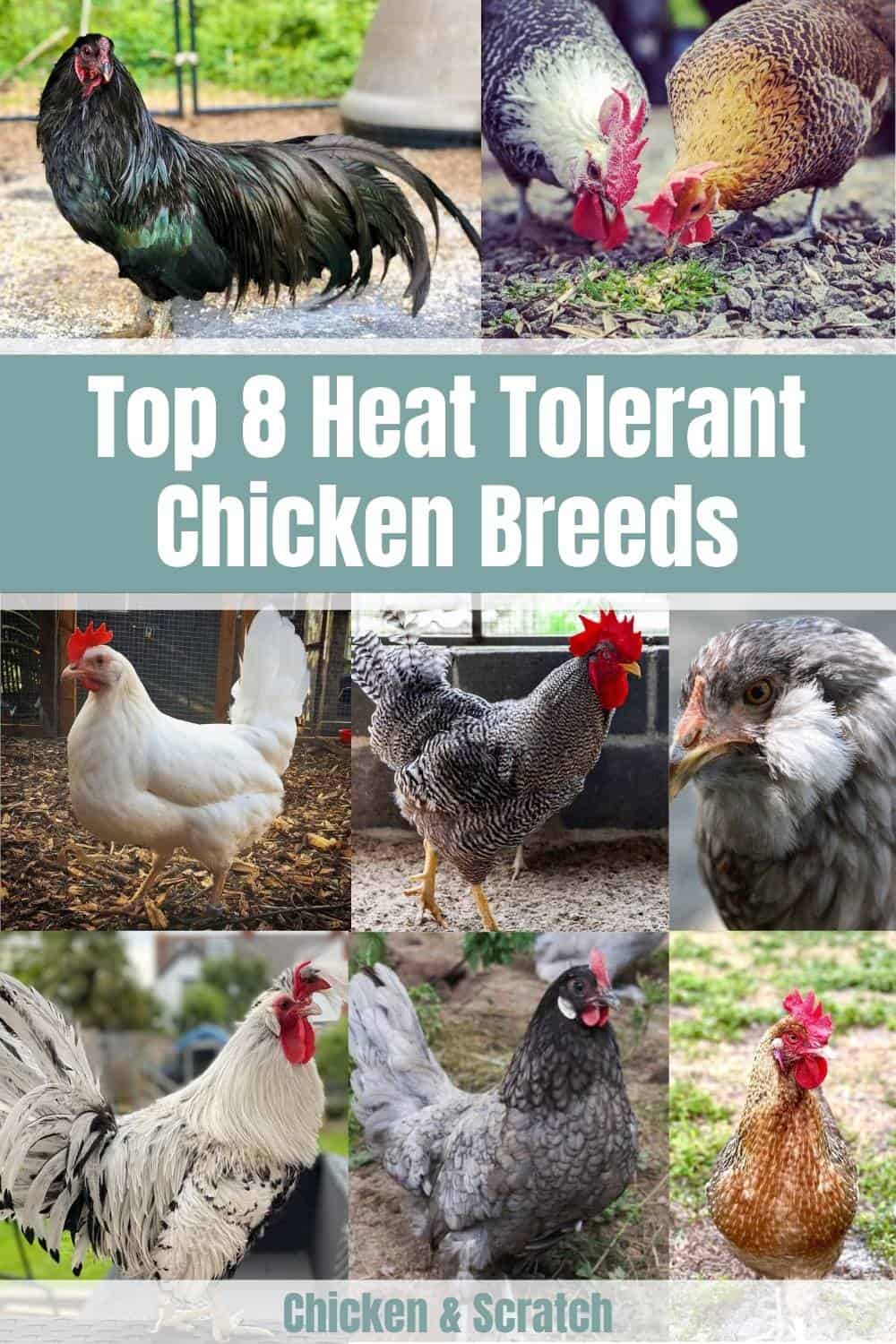In choosing chickens for your flock, it’s essential to look into how they handle the temperature around them. Before raising chickens, you need to take into consideration your location and the temperature around you. If you reside somewhere warm, here are the Top 8 Heat Tolerant Chicken Breeds you can choose from.
1. Campine Chicken

Campine Chicken Overview
Purpose | Dual purpose |
Egg Color | White |
Egg Size | Small to medium |
Egg Production | 180-200 eggs per year |
Broody | Yes |
Heat Tolerance | Yes |
Cold Tolerance | Yes |
Comb Type | Single |
Chicken Skin Color | White |
Life Span | 5-8 years |
Adult Size (Hen) | 4-5 lbs |
Adult Size (Rooster) | 6-7 lbs |
Backyard Friendly | 3/5 |
Campines chickens have two color varieties that resemble that of premium things. These two color varieties are silver and gold. These two variables are relatively easy to differentiate.
First, the silver type has neck hackles, and their heads are pure white. It’s pretty remarkable as the rest of the chicken’s body is patterned with beetle-green bars in a white background or base. It looks like they are wearing a dress!
These birds have a high level of energy, and thus, they are pretty much one of the most active birds in town. While most chickens, including this one, are not so strong and skilled to fight off predators, these guys can indeed run and escape for their lives.
In short, they may need extra protection in their space or setup. It would be beneficial to set up a fence or a detector to help alarm your chickens and you when an uninvited guest decides to visit.
Campines handle both the cold and hot weather well. Of course, as a chicken carer, there are still things you need to prepare for them, especially during these temperatures.
You should provide them with a source of heat when it’s freezing and enough cool water when it’s burning hot outside. Like humans, chickens need some adjustments and taking care of too. All in all, they are pretty tolerant. Read more about Campines chicken.
2. Penedesenca Chicken
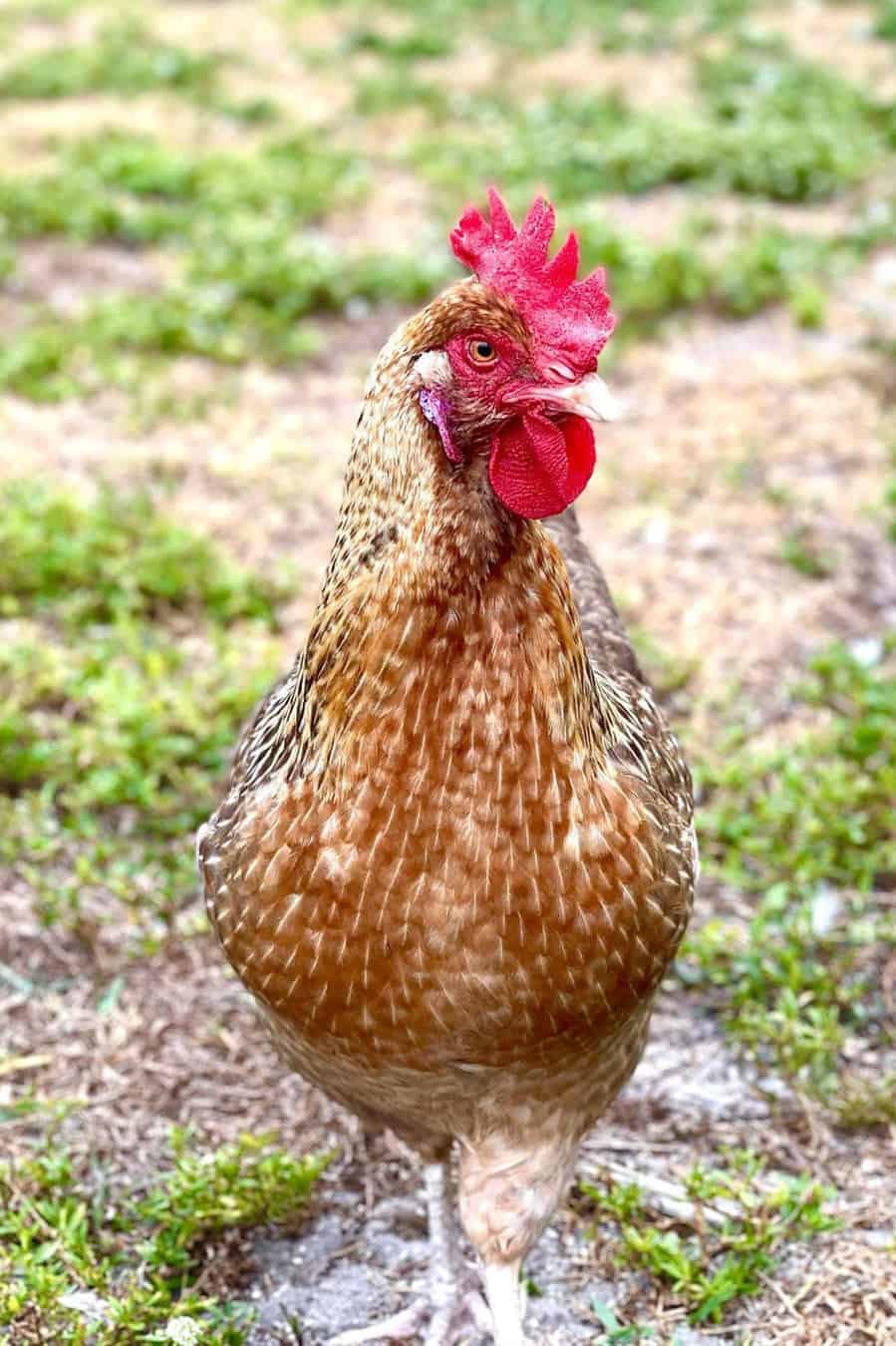
Penedesenca Chicken Overview
Purpose | Dual purpose |
Egg Color | Dark brown |
Egg Size | Medium |
Egg Production | 160-200 eggs per year |
Broody | Yes |
Heat Tolerance | Yes |
Cold Tolerance | Poor |
Comb Type | Single |
Chicken Skin Color | Red |
Life Span | 5-8 years |
Adult Size (Hen) | 4-6 lbs |
Adult Size (Rooster) | 6-8 lbs |
Backyard Friendly | 4/5 |
Penedesenca Chickens originated in Spain during the first half of the 20th century. They are wildly popular for their rich brown colored eggs. They have a fascinating past.
Penedesenca chickens were almost wiped out during the 1980s. Thankfully, a biologist worked with the Spanish government and did the necessary things to save the breed. And so, voila! The Penedesenca has now come back.
These chickens exude specific intense energy because of their appearance. Strong colors of red are dominant in these birds. They have red wattles, earlobes (with a white center), and a special red comb, also called king’s comb or carnation comb. Their comb resembles a crown that spreads high and wide over their heads.
These birds originated in Spain and are used to mild climates and probably some months of a hot environment. Penedesenca has nothing to worry about because these chickens are very heat resistant.
They like foraging, and this is most usually how they get their food. These chickens are only heat resistant. Given the opposite situation, they cannot function as well as they do in warmth. These chickens could be relatively stagnant during winter. When it gets colder, Penedesencas tend to avoid foraging.
3. Plymouth Rock Chicken
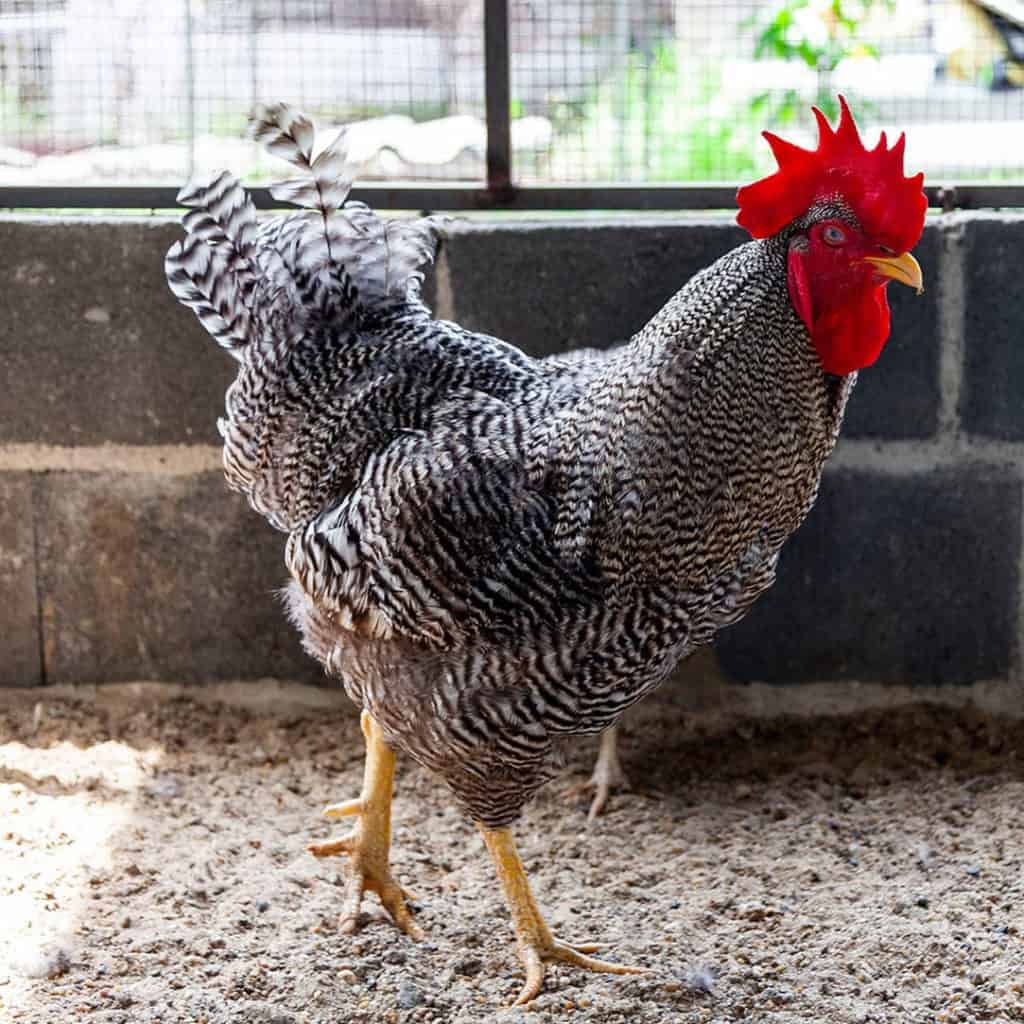
Plymouth Rock Chicken Overview
Purpose | Dual purpose |
Egg Color | Brown |
Egg Size | Large |
Egg Production | 200-280 eggs per year |
Broody | Yes |
Heat Tolerance | Yes |
Cold Tolerance | Yes |
Comb Type | Single |
Chicken Skin Color | Yellow |
Life Span | 6-8 years |
Adult Size (Hen) | 6-7 lbs |
Adult Size (Rooster) | 8-9.5 lbs |
Backyard Friendly | 4/5 |
These barred birds are one of the oldest and most popular breeds existing today. They are popularly bred in various places because of their practicality and purpose. These birds are good layers, and their meat is good too. Aside from their market advantage, these birds are also good to raise as pets as they are one of the sweetest chickens you can encounter.
They also exude a powerful aura because of their bright red features like single combs, wattles, earlobes, and faces. They have broader backs than some other breeds, and they stand with confidence.
Their full and deep breasts allow them to give off confidence in their stance. These birds are very adaptable, which makes them a pretty stable and suitable addition to your flock. These friendly chickens offer more than companionship in your flocks, and they also produce a lot of saleable goods and helpful products.
Their friendly and calm nature makes them even more irresistible—these gentle birds like being cuddled and petted. In short, they are the absolute lap chickens! Plymouth Rock Chickens are generally just low-maintenance chicken that has a lot of things to offer you. These creatures lay eggs reasonably well, are suitable meat, and can withstand cold and hot temperatures. Read more about Plymouth Rock Chicken.
4. Leghorn Chicken
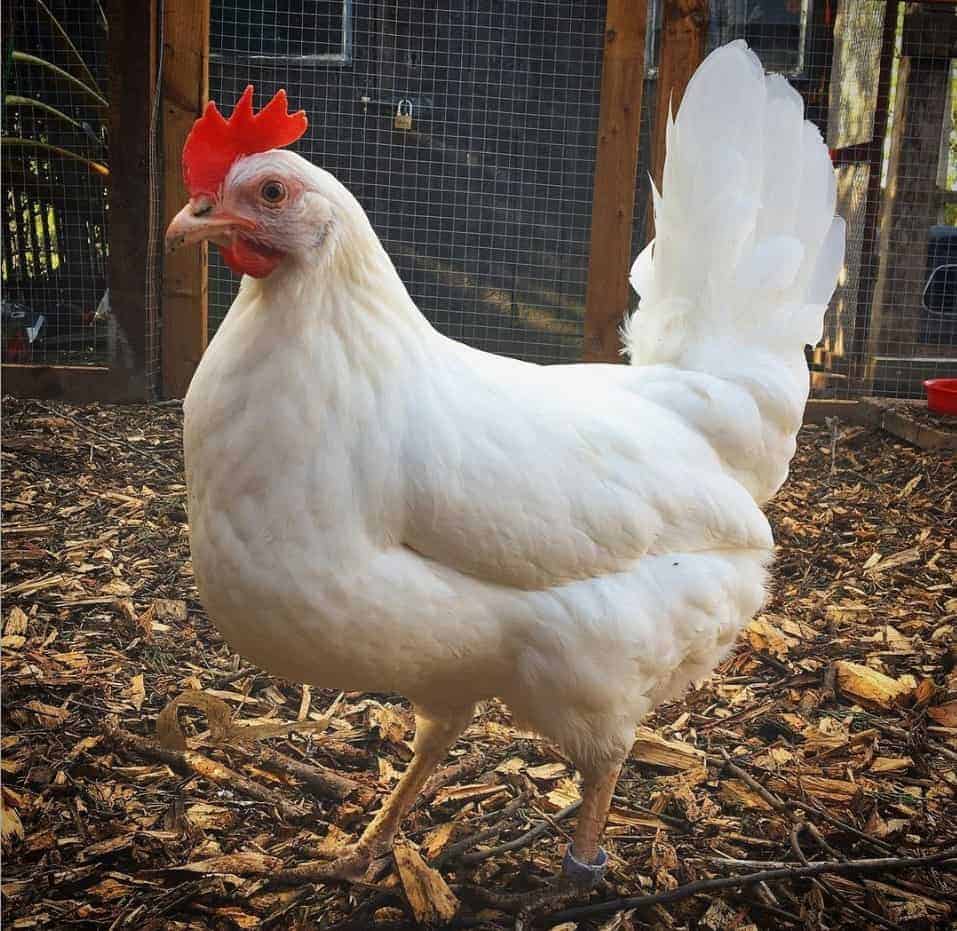
Leghorn Chicken Overview
Purpose | Egg production |
Egg Color | White |
Egg Size | Large |
Egg Production | 280-320 eggs per year |
Broody | No |
Heat Tolerance | Yes |
Cold Tolerance | No (poor) |
Comb Type | Single |
Chicken Skin Color | Yellow |
Life Span | 6-8 years |
Adult Size (Hen) | 4-5 lbs |
Adult Size (Rooster) | 6-7 lbs |
Backyard Friendly | 3/5 |
This may be one of the most popular chickens out there because of the famous kids’ show entitled Looney Tunes! When people hear leghorns, the picture that automatically pops into their mind is the color white.
Leghorns have varieties of colors too! When you have leghorns, it is also observable that they may either have a single comb or a rose comb. Leghorns typically have white earlobes that signify them laying white eggs.
These birds are active, and they like moving around and foraging. While they may prefer to be free to roam around the space, they are very adaptable and can adapt to confinement.
They may be quite the snob to humans, so they are not the best pets to pet and cuddle with. Leghorns are excellent layers. However, these birds are not timeless. The number of eggs they produce can deflate as they exceed the age of four.
These chickens are one of the healthiest breeds to raise. They encounter little to no health issues in their lifetime. They don’t need much help as they are very independent and will find their food given that they are set free for foraging. When kept in confinement, it would be beneficial to provide them with freedom every once in a while, as these birds have a high energy level. Read more about Leghorn Chicken.
5. Appenzeller Chicken
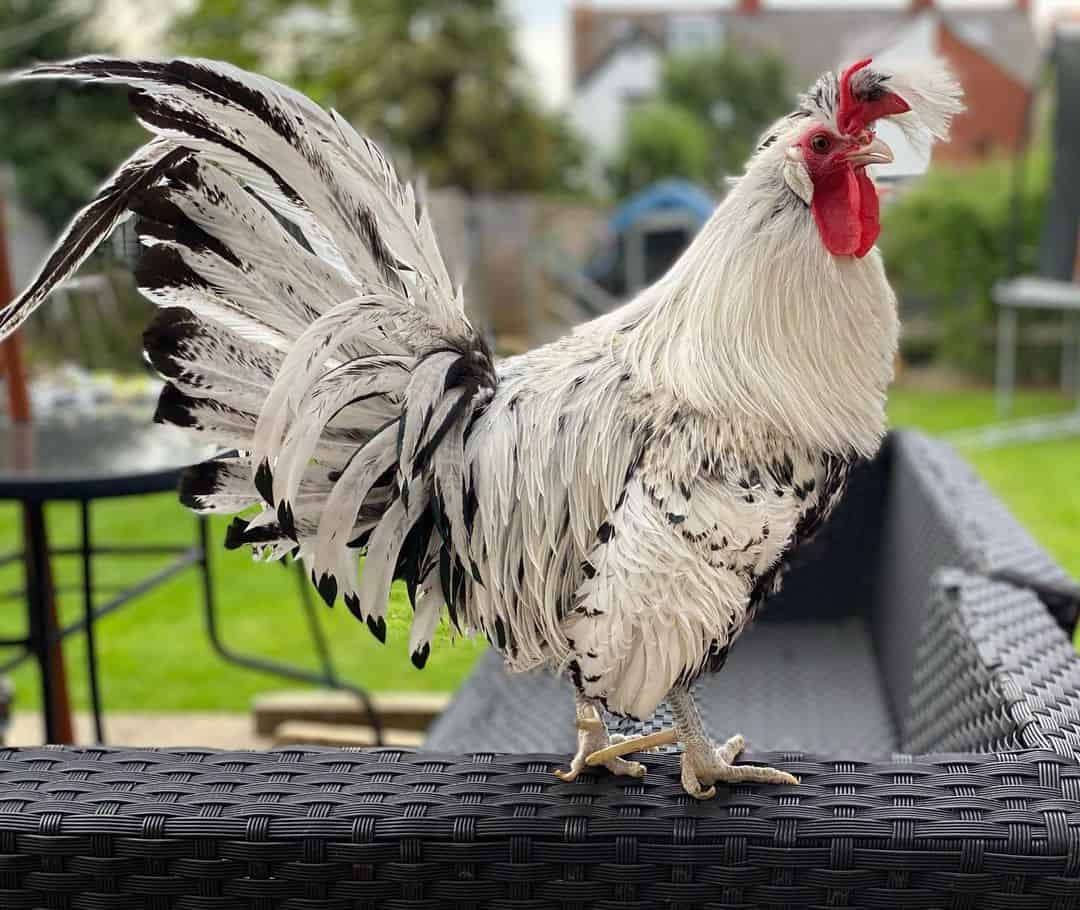
Appenzeller Chicken Overview
Purpose | Show |
Egg Color | White or cream |
Egg Size | Medium |
Egg Production | 160-200 eggs per year |
Broody | Yes |
Heat Tolerance | Yes |
Cold Tolerance | Yes |
Comb Type | Single |
Chicken Skin Color | Yellow |
Life Span | 6-8 years |
Adult Size (Hen) | 4.5-5.5 lbs |
Adult Size (Rooster) | 6.5-7.5 lbs |
Backyard Friendly | 4/5 |
These birds from Switzerland are one of the most exciting chickens you will meet. Their looks are one thing that sets them apart from the rest. There are two types of Appenzellers, namely Spitzhauben and Barthuhner.
For Spitzhauben, Both males and females of these birds have lazy combs and V-combs. On the other hand, for the Barthuner, these birds have no crest and possess rose combs.
They are pretty adaptable to their environment as they are inherently well-adapted to freedom in the mountains. This being said, they prefer having enough space. These chickens do not tolerate confinement very well. Their roosters love to stay on trees. This being said, they like having enough freedom that allows them to roost on trees, climb stuff, and forage to their heart’s content.
Their strong appearance makes them one of the best show chickens out there. Appenzeller is one of the rare breeds in America, so if you are starting, this might not be the starter chicken for you.
These birds are intelligent, and they like to make friends too. They enjoy strolling and exploring the gardens, so the backyard will indeed seem more bright with them in it. They like having space to roam about instead of being confined inside a tighter place.
Appenzellers are okay with almost any temperature. They can tolerate both cooler and warmer temperatures. Their light bodies and compact appearance help them move well. One point about these birds is their capability to adjust to their environments. However, it would be more beneficial for them to have enough space to forage to their heart’s content.
6. Sumatra Chicken
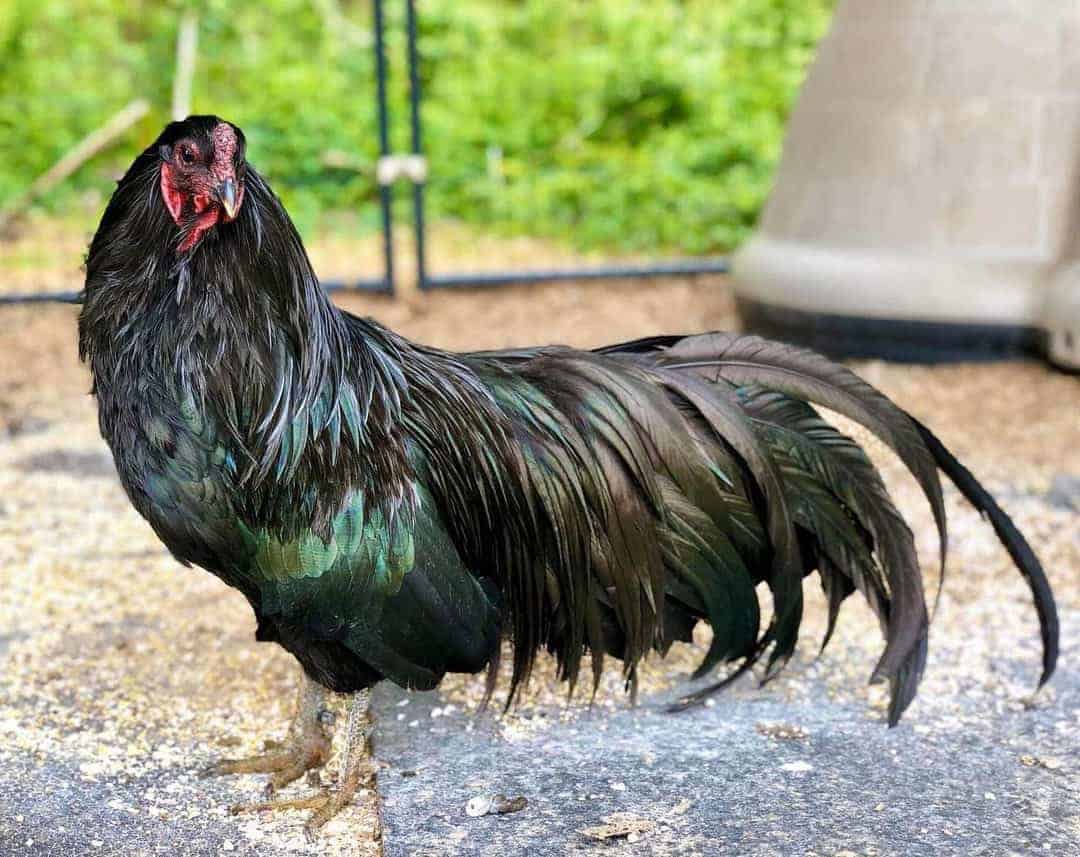
Sumatra Chicken Overview
Purpose | show |
Egg Color | White or tinted |
Egg Size | Medium |
Egg Production | 50-80 eggs per year |
Broody | Yes |
Heat Tolerance | Yes |
Cold Tolerance | No |
Comb Type | Pea |
Chicken Skin Color | Black |
Life Span | 6-8 years |
Adult Size (Hen) | 4-5 lbs |
Adult Size (Rooster) | 6-8 lbs |
Backyard Friendly | 3/5 |
Sumatra chickens are from Indonesia. This breed is considered exotic. The history of this breed is fascinating as it was formerly thought to be a pheasant rather than a chicken. Many believed that Sumatra chicken evolved from other types of fowl. However, despite all these stories and talks, Sumatra is, first and foremost, a chicken.
Their history is one of the things that makes their identities very unique and sought for. Although it had an experience of being a fighting chicken in the past, this breed is now widely raised as ornamental show chickens rather than engaging it in fights.
This breed exudes elegance and power through its solid black color. While these birds are mostly black, they can also have streaks of red-breasted coloration. Nowadays, the standard color variations for these birds are deep black and some green hints. The black pigment is very much incorporated in this breed as their skin, bones, and shanks are also black.
Sumatra chickens are quite the rare type of chicken. Their personality is unique as it does not adapt to those of domestic chickens. The way they act and respond to a stimulus is leaning towards the typical character of a wild game rather than a docile chicken.
These birds prefer to live in places with warmer temperatures. However, this does not mean that it can’t thrive in colder areas. It’s just that it prefers temperatures that mimic the place of its origin, which is in the far east. Read more about Sumatra Chicken.
7. Easter Egger Chickens
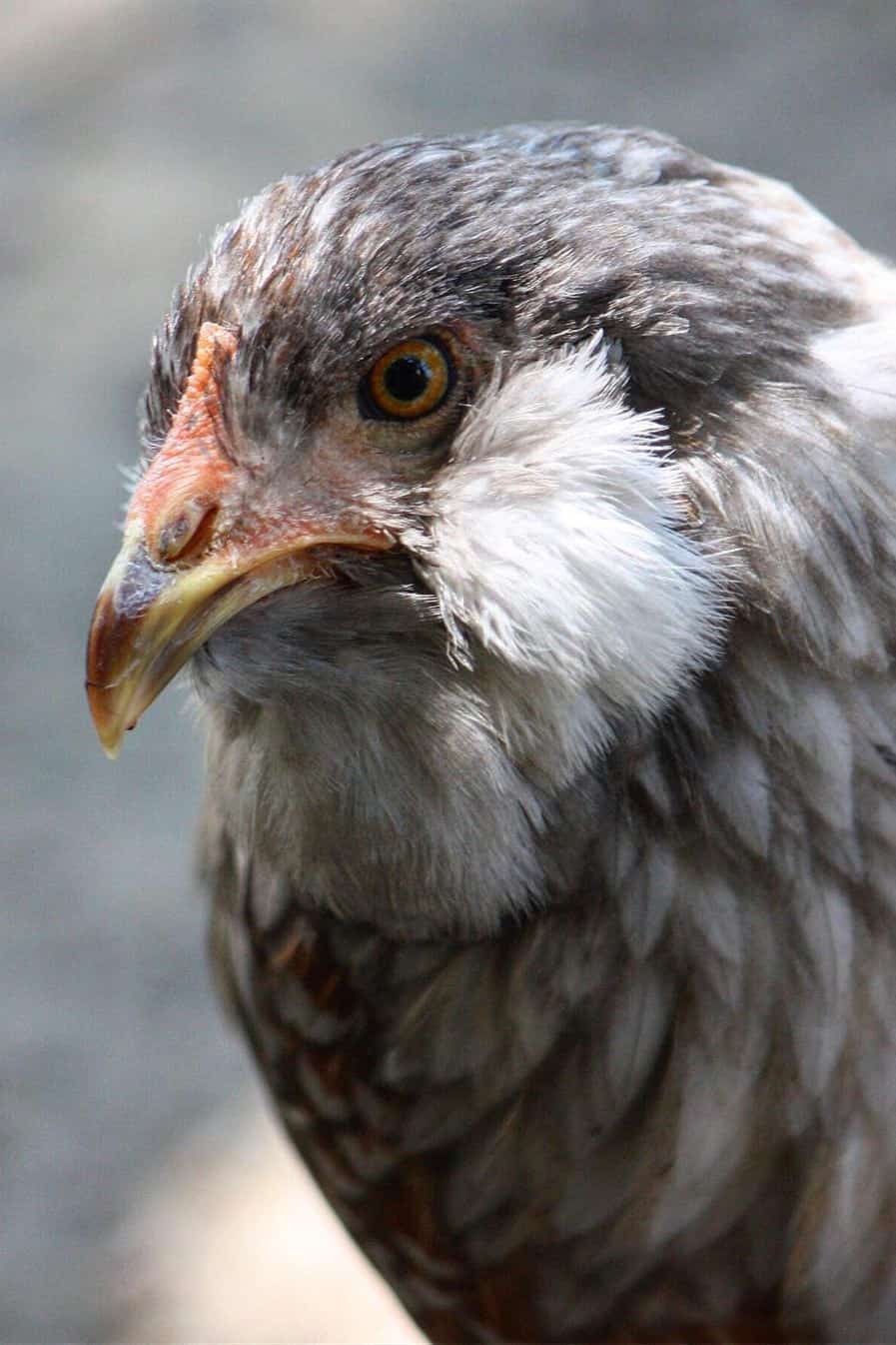
Easter Egger Chicken Overview
Purpose | Dual purpose |
Egg Color | Blue, green, or sometimes pink or brown |
Egg Size | Medium to large |
Egg Production | 200-280 eggs per year |
Broody | Sometimes |
Heat Tolerance | Yes |
Cold Tolerance | Yes |
Comb Type | Pea or single |
Chicken Skin Color | Yellow |
Life Span | 6-8 years |
Adult Size (Hen) | 4-6 lbs |
Adult Size (Rooster) | 5-7 lbs |
Backyard Friendly | 5/5 |
Easter Egger Chickens are not considered a pure breed but rather a hybrid. These hybrids are one of the most sought for in places like America. These birds are famous for their eggs and appearances. Since these chickens are hybrid, they usually do not have a ‘major’ type of color or pattern. In addition to this, these birds can lay eggs in various colors.
These birds have the gene that allows for blue eggs having the genes of Ameraucana and Araucana. Crossbreeding brown layers with these breeds can result in olive eggers or other chicken hybrids with different egg colors.
This is where they got their label. Easter has been a very famous holiday for various places in the world like the west. There is the renowned occasion of easter egg hunting too. In this event, people search for Easter eggs which are usually colorful eggs/ eggs with designs. And so, having the ability to lay eggs of different colors, Easter eggers were called Easter eggers.
It is safe to say that these guys are one of the crowd’s favorites. They make good additions to your flocks. These birds are decent layers and are also suitable as meat. Not only that, these birds do not require too much time and effort.
In short, Easter Eggers are your low-maintenance friends with a fun and friendly disposition. These birds are not shy. They will not hesitate to approach humans and ask for treats. Easter Eggers are also good friends to kids.
These birds are heat tolerant and can handle warm temperatures well. But wait, there’s more! These birds are also cold-hardy and can live in colder weather. Read more about Easter Egger Chicken.
8. Andalusian Chicken

Andalusian Chicken Overview
Purpose | Egg |
Egg Color | White |
Egg Size | Large |
Egg Production | 165-200 |
Broody | No |
Heat Tolerance | Yes |
Cold Tolerance | Average |
Comb Type | Single |
Chicken Skin Color | White |
Life Span | 6-8 years |
Adult Size (Hen) | 4.5 lbs |
Adult Size (Rooster) | 4.5 lbs |
Backyard Friendly | 4/5 |
Andalusian Chickens are one of the oldest breeds in the Mediterranean. As the name suggests, it took its name from a place in Spain named Andalusia. This breed’s blue feathers characteristic is achieved by mating a white cock and a black hen.
These birds exude an elegant and powerful vibe as they walk. They carry themselves with grace and with confidence as they walk in an upright stance. Andalusian chickens like to forage, and so they may prefer having enough space to roam around. These chickens have long bodies, white skin, and lead blue shanks. Their earlobes are white, along with their single crown.
While these birds can be friendly, they are mostly uninterested in contact or not really into being petted or cuddled. In this case, if you want chickens that you can interact with or lap chickens, Andalusian chickens may not be for you.
If you are staying in a warmer place and you want elegant addition to your flock, these birds may be the ones for you. Andalusian chickens are heat tolerant and can adapt well to hot climates. One thing to remember is to make sure to give them the space they need and at the same time prevent them from crossing fences with their powerful flying skills. Read more about Andalusian Chicken.
Summary
Raising and taking care of chickens is more than feeding and providing space. It is also about giving them a proper place to live. Finding the right chicken that thrives well in a given temperature is crucial in searching for an addition to your flock or even a newbie chicken owner. Getting to know the Top 8 Heat Tolerant Chicken Breeds can help assess and make a sound decision.


Joseph Hudson has been raising chickens for over 15 years. In 2018, he completed the Agriculture & Natural Resources program at Mt. San Antonio College. He currently raises over 1400 chickens on his 7.5-hectare farm. He keeps sharing his experience on raising healthy and happy chickens on Chicken Scratch The Foundry.
